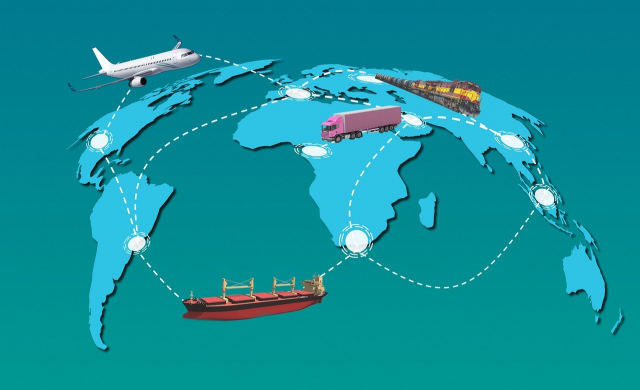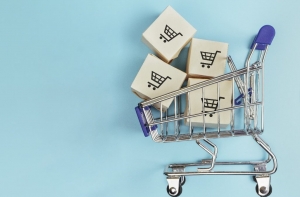Supply Chain Smoother: Making Deliveries Faster and Cheaper
Imagine a game of hot potato, but instead of a potato, it's a box full of phones. You toss the box to your friend, who throws it to another, and so on, until it reaches the last person. The goal? Get the box there quickly and without dropping it.
A supply chain is kind of like that hot potato game, but instead of friends, you have companies. One company makes the phones, another ships them, and a store sells them to you. A smooth supply chain gets those phones to you quickly and affordably, just like throwing the box without dropping it.
Why is a Smooth Supply Chain Important?
Imagine if the phone box got dropped and broke. That would be a waste of money! A smooth supply chain helps companies avoid waste and save money in three ways:
- Less Stuff Sitting Around: Imagine if your friend kept the phone box in their room instead of passing it on. In a supply chain, companies don't want to hold onto too many phones (or extra boxes!). A smooth supply chain helps them have just the right amount of stuff on hand.
- Faster Deliveries: The quicker you get the phone, the happier you are, right? A smooth supply chain helps companies get things to stores and customers faster.
- Happy Customers: When you get your phone fast and without problems, you're happy! Smooth supply chains help companies keep their customers happy.
Cool Tech Making Supply Chains Smoother
Imagine if the phone box could talk and tell you where it was! In the future, supply chains might use special boxes with chips that can track where they are and how they're doing. Here are some other cool tech tools that can help:
- Super Smart Computers:Imagine a super smart friend who can remember exactly how many phones each person has thrown. These computers can help companies predict how many phones they'll need and plan ahead.
- Warehouse Robots:Imagine tiny robots that can zip around a warehouse, grabbing boxes and putting them on shelves. These robots can help companies move things around faster and more accurately.
Future Trends and Innovations
The use of collapsible crates in supply chains is expected to grow, driven by advancements in materials and design. Future trends may include:
- Smart Crates: Integration of IoT technology to create smart crates that can monitor temperature, humidity, and shock, providing real-time data to ensure product integrity during transit.
- Sustainable Materials: Development of eco-friendly materials for collapsible crate, further enhancing their sustainability profile and reducing environmental impact.
- Automation Compatibility: Designing crates that are compatible with automated systems in warehouses, facilitating seamless integration with robotic handling and storage solutions.
- Modular Designs: Innovations in modular crate designs that allow for customization based on specific needs, offering even greater flexibility and efficiency.
Challenges of Keeping Things Smooth
Just like a game of hot potato can get messy with too many people, supply chains can get complicated with too many companies involved. Here are some challenges companies face:
- Too Many Cooks in the Kitchen:The more companies involved, the harder it is to keep things organized.
- Data Overload:Imagine if your friend kept track of every throw of the phone box on a giant chalkboard. Keeping track of all the information in a supply chain can be overwhelming.
- Change is Hard:Imagine if your friend suddenly decided to throw the box a different way. People don't always like change, and companies need to get everyone on board with new ways of doing things.
The Future of Supply Chains
Just like the game of hot potato keeps getting faster and more fun, supply chains are always changing. Here are some ways they might improve in the future:
- Even Smarter Computers:These super smart computers will get even better at predicting what customers want and helping companies plan accordingly.
- Following the Chain:Imagine a special code on the phone box that lets everyone see where it's been. This technology can help track products throughout the supply chain and make sure everything is above board.
- Going Green:Just like not littering during your hot potato game, companies will focus on eco-friendly practices to reduce waste and pollution.
Making the Supply Chain Flow
Imagine you and your friends practiced throwing the phone box a lot. You'd get really good at it, right? Companies can improve their supply chains in a similar way by using these strategies:
- Do More with Less (Lean Manufacturing):Imagine playing hot potato with only two people instead of five. This strategy focuses on getting rid of unnecessary steps and waste in the supply chain.
- Predicting the Future (Demand Forecasting):Imagine knowing exactly how many people will be at your game so you only have to bring the right number of phone boxes. Companies use data to predict how many things they'll need to make and sell.
- Working Together (Collaboration):Imagine you and your friends huddle up before the game to plan your throws. Companies talk to each other in their supply chain to make sure everything runs smoothly. This includes suppliers, factories, stores, and even you, the customer!
By using these strategies, companies can streamline their supply chains, just like you and your friends can become hot potato champions!
Conclusion
By making their supply chains smoother, companies can save money, keep customers happy, and be prepared for the future.
Even though there are challenges, the benefits of a smooth supply chain are clear. So next time you get a package, remember all the work that went into getting it to you!
Optimizing supply chains is essential for businesses to stay competitive, reduce costs, and meet customer expectations.
By using strategies like lean manufacturing, demand forecasting, and technology integration, companies can make their supply chains more efficient and resilient.
While challenges exist, the benefits of a well-optimized supply chain far outweigh the difficulties.
As emerging trends and technologies continue to evolve, businesses that embrace these innovations will be well-positioned to thrive in an increasingly complex and dynamic market.






